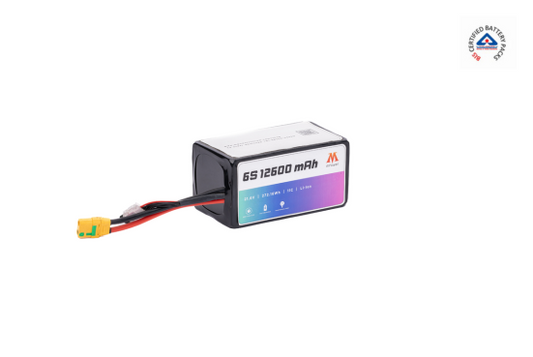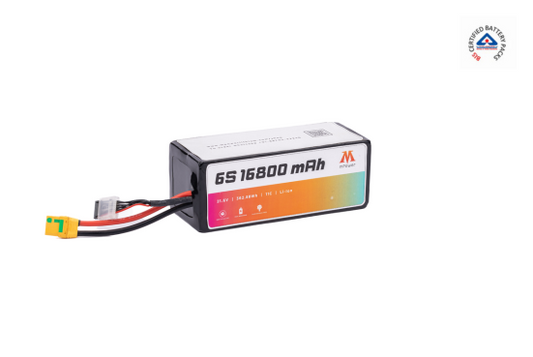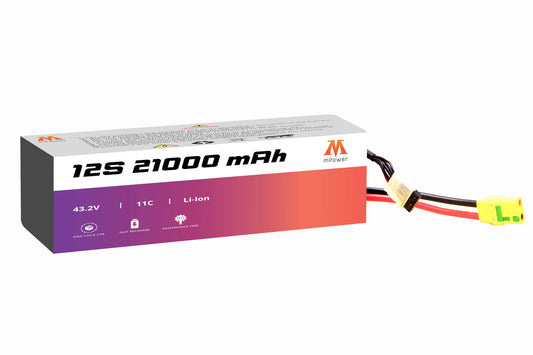
The construction industry is rapidly adopting drone technology to improve site monitoring and mapping, transforming how projects are managed and executed. Drones offer the ability to capture high-resolution aerial images, monitor progress, and create detailed 3D maps with accuracy and efficiency that would be difficult to achieve using traditional methods. But with so many drones on the market, choosing the right one for your construction site can be challenging.
At mPower, we are here to guide you through the process of selecting the best drones for construction site monitoring and mapping and help answer the critical question, "How do I choose a drone battery?" when considering long flight times and durability.
Key Features to Look for in Construction Drones
Camera Quality:
For mapping and progress monitoring, the quality of the drone's camera is paramount. Look for drones with high-resolution cameras (at least 20 megapixels) that can capture detailed aerial shots and videos. A drone with a 4K or better video capability ensures that you’ll have crystal-clear footage to analyze and present.
Mapping Software Compatibility:
Drones used for construction should be compatible with industry-standard mapping software. Look for models that can integrate with software like Pix4D, DroneDeploy, or similar platforms for seamless data processing. These software platforms allow for the creation of detailed 3D models, the calculation of volumes, and the analysis of progress over time.
Flight Time:
Flight time is a crucial factor when monitoring large construction sites. A drone that offers longer flight times reduces the need to stop for recharging and allows for more comprehensive data collection in a single flight. Most professional drones for construction provide flight times between 25 to 40 minutes on a single charge.
Durability and Weather Resistance:
Construction sites can present challenging environments with dust, wind, and other hazards. Drones designed for these conditions should be rugged and equipped with weatherproofing features. Look for drones with IP ratings (Ingress Protection), ensuring they can handle rain and dust without damage.
GPS and RTK Capabilities:
For precision mapping, drones equipped with GPS and Real-Time Kinematic (RTK) technology are the gold standard. RTK drones offer centimeter-level accuracy, which is critical when creating topographic maps or tracking earth-moving operations. This high level of accuracy is essential for detailed site analysis and making informed construction decisions.
Obstacle Avoidance and Autonomous Flight:
A drone equipped with obstacle detection and avoidance systems is essential on busy construction sites where cranes, structures, and vehicles may pose collision risks. Many modern drones feature sensors that allow them to autonomously avoid obstacles autonomously, ensuring safer and more efficient flights.
Choose the Right Drone Battery
As you evaluate which drone model to invest in, one key consideration should be the battery. This leads to the critical question, "How do I choose a drone battery?" The right battery is essential to ensure that your drone can handle the large, demanding tasks that construction sites require. Here are some factors to consider when choosing a battery:
Capacity:
Measured in milliamp-hours (mAh), battery capacity directly impacts how long your drone can stay airborne. A higher mAh means longer flight time but also a heavier battery. Finding a balance between flight time and weight is crucial.
Battery Type:
Most drones use Li-Po (Lithium Polymer). But remember, Lithium Polymer is based on old technology. So it's better to choose Li-Ion (Lithium-Ion) batteries, which last longer and charge faster but may add weight to your drone.
Spare Batteries:
For large construction sites, having multiple spare batteries can be a game-changer. This allows you to swap out batteries quickly on-site, ensuring minimal downtime.
Charging Time:
Consider how long it takes for the battery to recharge. In some cases, fast-charging solutions can help minimize delays between flights.
At mPower, we offer high-quality, durable batteries specifically designed for drones. These batteries ensure optimal performance for demanding applications like construction monitoring and mapping.
Conclusion
Drones are quickly becoming indispensable tools for construction site monitoring and mapping, offering precision, efficiency, and safety that manual methods cannot match. When choosing a drone for your construction projects, focus on factors such as camera quality, mapping software compatibility, flight time, and durability. Don't overlook the importance of battery selection, as it plays a critical role in how efficiently your drone will operate. Asking yourself, "How do I choose a drone battery?" is key to ensuring that your investment meets the demands of large-scale, long-term projects.
With mPower providing reliable drone batteries, you can ensure longer flights, efficient monitoring, and precise mapping for your construction projects.
Click here to buy your drone batteries from mPower.












